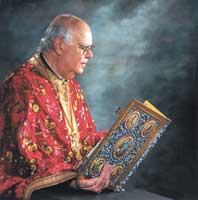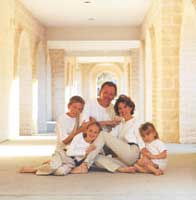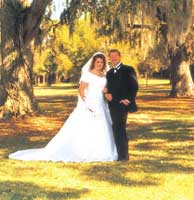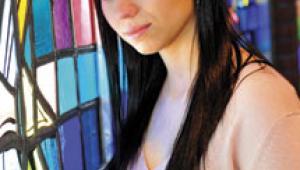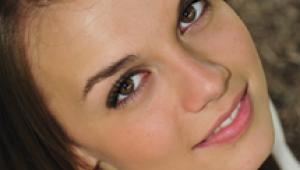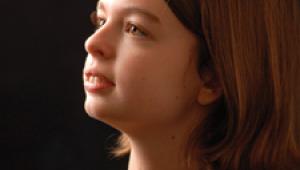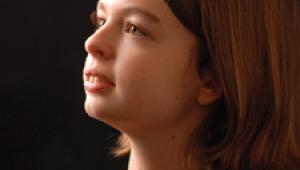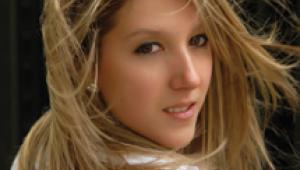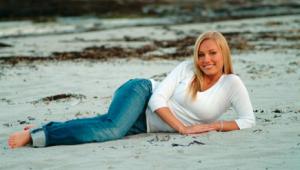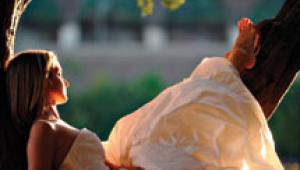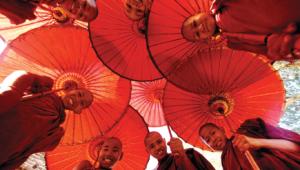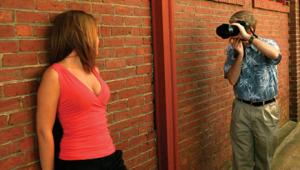Wedding & Portraiture
I Wish I'd Known More About Lenses Years Ago
I used a fixed-lens camera
for many, many years--even after I'd become a professional photographer.
Then, someone told me that I could never be a professional until I had
a camera on which you could change lenses. I remember being glad that
my clients didn't know that. But the conversation did intrigue
me, so I looked into it. |
|||
In the simplest of terms, I
use varying focal lengths on my Hasselblad camera to help me include what
I want behind my subjects. Telephoto lenses help me contain the backgrounds
to what's just behind my subjects. Wide angle lenses allow me to
show lots of background behind them. Let's look at some of my recent
images and see how that works. |
|||
Occasionally, however, I'm
working in a more cramped area than usual. In cases such as these I switch
to a 120mm lens. I can create portraits without distortion--even groups
of up to five or six people against a background like this. |
|||
The exposure was based on the
brightly lit gold dome far behind them. I kept the bride and groom in
the same strong sunlight, split-lighting their faces. I used two Quantum
flashes to light them. One was my main light close to the right side of
my camera. It wrapped the light around from the left side of their faces
onto the shadowed side. A second flash was behind the bride, backlighting
her veil. Both of them were at full power, matching the brightness of
the sun. |
|||
The light in this area was
diffused by the covered area all around them. There was enough light there
to take the picture without any additional lighting from me, but in cases
like this I like to expose for the ambient light and come in with a bare-bulb
flash close to the camera. The flash is two f/stops less than the ambient
light and completely ignored when figuring the exposure. My flashes are
always triggered by Quantum Radio Control Slave units. |
|||
As I did outside, I used a
40mm lens to include as much of the background that I could from the rear
of the church, keeping the bride and groom only a few feet from the camera.
I exposed for the background and matched a bare-bulb flash, camera right,
to the f/stop of the light in the background. Of course, there was another
flash behind the couple lighting her veil. Finally, I positioned the camera
so that the bright area of sunlight on the wall far in the background
would be between the two faces. |
|||
To take advantage of this outdoor
setting I narrowed the field of vision down with my 150mm lens again and
positioned the couple against a bright, contrasting part of the background.
I exposed for the lightly shaded area in which they were standing and
once more used a bare bulb two f/stops under the ambient light. Yes, there's
another flash behind them to backlight her veil. |
|||
Notice that when there is bright
sunlight in the scene and I want to keep detail throughout the picture,
I make certain that my subjects, too, are in bright sunshine. The exposure,
then will be in good balance. Split-lighting the faces with direct sunshine
is such an easy way to accomplish this type of lighting. Then, add a strong
flash from the same side as the sunlight, but closer to the front of the
faces. Always backlight, matching the f/stop coming through the veil. |
|||
Now, study Photo 8. Why did
I use a 40mm lens? To include as much of the room behind her as I could
get into my viewfinder, of course. I exposed for the ambient light in
the background and matched the other areas with three flashes. One was
coming down the staircase all the way far behind her to show detail there.
The second flash lit her profile and the third was where? Backlighting
her veil, of course. |
|||
The couple on the top of the
mountain (actually only 3' above sea level) were photographed with
my 150mm lens. I wanted to place them against the open sky. I didn't
want a lot of distraction around them, behind them, or anywhere. The lens
was perfect for this moment. |
